Celebrity
Who Is Linda Bazalaki?: The Untold Story of the Ugandan Beauty Queen
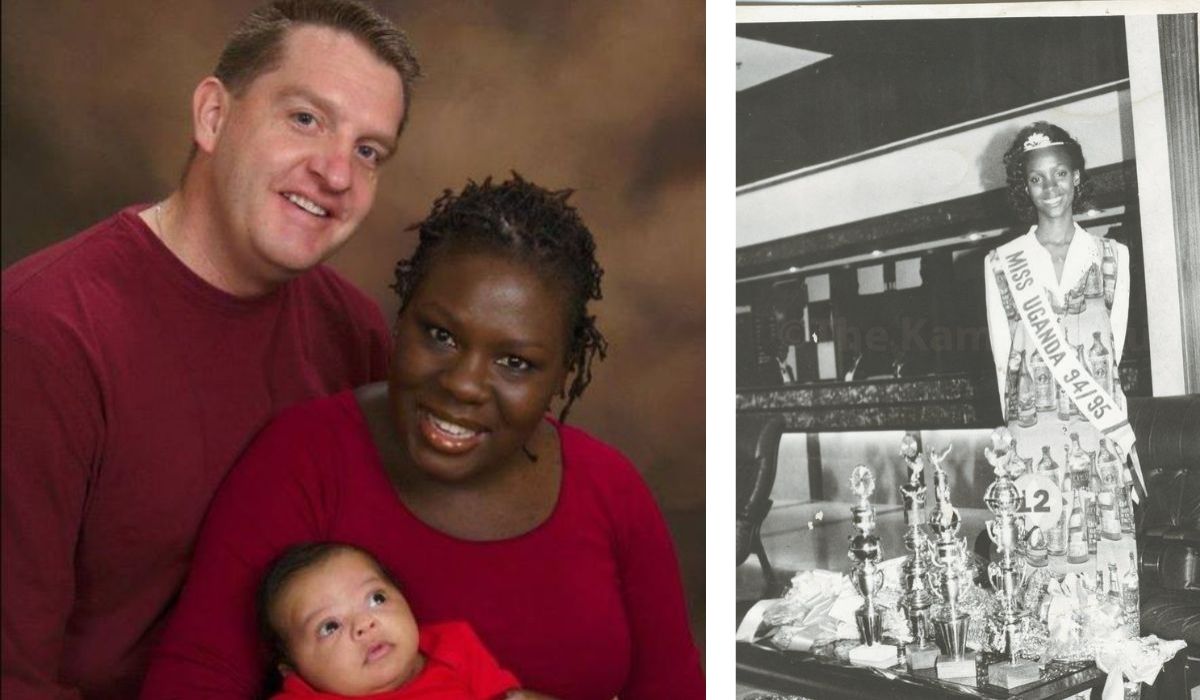
In the world of beauty pageants, some names echo through history not merely because of the crowns they wore, but because of the impression they left on an entire generation. Linda Bazalaki is one such name in Uganda’s cultural landscape. She rose to national fame when she was crowned Miss Uganda in 1993, a moment that has since been remembered by many who witnessed her poise, intelligence, and charisma. But while the spotlight of a pageant title often fades with time, Linda’s story took a fascinating turn that kept her name relevant even decades later. This is the untold journey of Linda Bazalaki—her life before the crown, her reign, and the private yet impactful life she built afterward.
QUICK BIO
| Attribute | Details |
| Full Name | Linda Bazalaki |
| Title | Former Miss Uganda, Healthcare Advocate |
| Nationality | Ugandan |
| Education | Degree in Public Health |
| Known For | Transforming from Miss Uganda to a healthcare advocate |
| Primary Role | Healthcare Advocate |
| Focus Areas | Maternal health, Child health, Disease prevention |
| Key Initiatives | Maternal and child health services, Disease prevention campaigns, Healthcare access improvement |
| Impact | Improved health outcomes, reduction in disease prevalence, better maternal health services |
| Policy Influence | Advocacy for healthcare reforms and policy changes |
| Challenges Faced | Bureaucratic hurdles, limited resources, societal opposition |
| Future Plans | Expand health initiatives, integrate technological solutions in healthcare |
| Legacy | Strengthened healthcare services and community health in Uganda |
Early Life in Uganda: Humble Roots and Ambitious Dreams
Little is publicly known about Linda Bazalaki’s early childhood and family background, which adds a certain mystique to her story. Raised in Uganda, she grew up in a society where traditional values were deeply rooted, but where modern influences were beginning to take shape. It was a time when education was becoming increasingly valued for young women, and Linda was one of the promising individuals who embodied both tradition and modernity.
Those who knew her during her formative years describe her as intelligent, composed, and driven by an inner ambition. She exhibited a natural elegance that caught attention, yet it was her sharp intellect and gentle demeanor that truly set her apart. Education played a pivotal role in her upbringing, helping to shape her worldview and laying the groundwork for the confident woman who would later represent Uganda on a national stage.
The Crowning of Miss Uganda 1993: A Defining Moment
When Linda Bazalaki stepped onto the stage of the Miss Uganda 1993 pageant, she was more than just another contestant. She exuded a rare blend of beauty, intellect, and eloquence that captured the judges’ and audience’s admiration. Winning Miss Uganda was no small feat; it required not just physical beauty but also intelligence, cultural knowledge, and the ability to articulate thoughtful opinions on social issues.
Her victory was a proud moment for Uganda, especially at a time when the nation was eager for positive role models amidst socio-political transitions. Linda’s win was not just about the sash and crown—it symbolized a new kind of Ugandan woman: confident, cultured, and capable of representing her country on the international stage. She was celebrated in newspapers, on television, and at public events, where she became a beacon of national pride.
Life as Miss Uganda: Duties Beyond the Spotlight
Holding the title of Miss Uganda came with a host of responsibilities that Linda Bazalaki embraced with grace. She became a public figure, representing Uganda in regional pageants and various international platforms. Her role often involved engaging with charitable organizations, advocating for education and women’s empowerment, and attending state functions where she represented not just beauty but Ugandan culture and values.
Her engagements went beyond the typical glitz associated with pageantry. Linda was seen at charity events, community outreaches, and social advocacy campaigns, making her reign meaningful beyond aesthetics. She used her position to inspire young Ugandan girls to pursue education, self-worth, and personal growth, proving that beauty and brains are not mutually exclusive.
The Decision to Step Away: Life Beyond Fame
Unlike many beauty queens who leverage their titles into long-standing public careers, Linda Bazalaki made the unusual but admirable decision to step away from the limelight. After completing her obligations as Miss Uganda, she quietly exited the public eye, a move that surprised many of her fans and followers. This deliberate retreat sparked curiosity and rumors, as people speculated about her whereabouts and future endeavors.
But Linda’s exit from fame was not a disappearance—it was a transition. She sought a new chapter, one where she could grow personally and professionally without the constant gaze of the public eye. This choice reflects a profound understanding of identity and purpose, recognizing that life’s value isn’t solely measured by public accolades but by personal fulfillment and meaningful contributions.
A New Life in the United States: Education and Career Transformation
Linda Bazalaki eventually relocated to the United States, a decision that marked a significant turn in her life journey. In moving abroad, she sought not just new opportunities but a chance to reinvent herself entirely. She pursued higher education with a focus on healthcare, eventually establishing herself in the medical field as a nurse.
This career choice was both practical and symbolic. Nursing is a profession grounded in compassion, service, and dedication—values that Linda had demonstrated throughout her life. In hospitals and clinics, she shifted from the public stage of beauty pageants to the quieter, yet equally impactful, environment of patient care. Her ability to transition from a celebrated beauty queen to a healthcare professional is a testament to her versatility and commitment to lifelong growth.
Family and Personal Life: Embracing Privacy and Fulfillment
One of the most admirable aspects of Linda Bazalaki’s journey is her ability to keep her personal life private. In an era where many public figures share every aspect of their lives on social media, Linda chose a path of discretion. She married and built a family in the United States, focusing on the intimate joys of family life rather than public approval.
Those close to her describe her as a loving spouse and a devoted mother, roles that she values deeply. Her personal life is enriched by the same grace and humility that characterized her public persona. This balance between personal fulfillment and professional success is a narrative that resonates with many women who aspire to have it all without sacrificing their sense of self.
Staying Connected to Her Roots: A Ugandan Abroad
Despite building a life in the United States, Linda Bazalaki has not severed her ties with Uganda. She remains connected to her homeland through participation in Ugandan diaspora communities, cultural events, and social gatherings. These interactions allow her to maintain a bridge between her past and present, reinforcing her pride in her heritage.
Linda’s continued connection to Uganda serves as an inspiration to many in the diaspora who wish to stay anchored to their cultural roots while navigating life abroad. She exemplifies how one can successfully blend multiple identities—being Ugandan, a former beauty queen, a healthcare professional, and a family woman—into a cohesive and fulfilling life story.
The Legacy of Linda Bazalaki: More Than Just a Beauty Queen
Linda Bazalaki’s legacy extends far beyond her Miss Uganda crown. She represents the power of personal evolution, demonstrating that one’s worth is not confined to a single achievement or phase in life. Her journey from national icon to private citizen underscores the importance of adaptability, education, and self-determination.
For many young Ugandan women, Linda remains a symbol of what is possible when beauty is combined with intellect, ambition, and compassion. She broke the mold of what a beauty queen could be, showing that life after the crown can be just as, if not more, impactful than the reign itself. Her story encourages others to pursue holistic lives where personal growth and social contribution coexist.
Why Linda Bazalaki’s Story Still Matters Today
In today’s fast-paced, media-driven world, the idea of quietly building a meaningful life away from the public gaze is both rare and refreshing. Linda Bazalaki’s story matters because it challenges the notion that success must always be visible and celebrated by the masses. She has shown that one can achieve fulfillment, respect, and legacy in quieter, more personal ways.
Her journey also provides a template for redefining success. By moving from beauty pageants to the medical profession, and from public acclaim to private contentment, Linda offers a broader understanding of what it means to lead a successful life. Her experiences serve as a powerful reminder that reinvention is not only possible but often necessary for true personal satisfaction.
Conclusion: The Enduring Influence of Linda Bazalaki
Though she may no longer grace magazine covers or television screens, Linda Bazalaki’s influence endures. She is a testament to the multifaceted nature of identity, where beauty, intellect, career, and family can all find a harmonious balance. Her life story is one of growth, humility, and silent triumphs—an inspiration not just to Ugandans but to anyone striving to live a purpose-driven life.
Linda Bazalaki remains an unsung hero in her own right, proving that while crowns may fade, character and integrity endure. Her legacy continues to inspire new generations to dream big, work hard, and live authentically, whether under the spotlight or beyond it.
Frequently Asked Questions (FAQs)
1. Who is Linda Bazalaki?
- Linda Bazalaki is a former Miss Uganda, crowned in 1993, who later relocated to the United States and built a career in the healthcare sector as a nurse.
2. What happened to Linda Bazalaki after winning Miss Uganda?
- After winning Miss Uganda, Linda Bazalaki moved to the United States where she pursued higher education and transitioned into a healthcare career, specifically nursing.
3. Where is Linda Bazalaki now?
- Linda Bazalaki currently resides in the United States, where she leads a private life focused on her family and professional work in healthcare.
4. Did Linda Bazalaki stay involved with Uganda after moving abroad?
- Yes, Linda Bazalaki maintains her connection to Uganda through diaspora community events and cultural engagements, reflecting her enduring pride in her heritage.
5. What is Linda Bazalaki’s legacy?
- Linda Bazalaki’s legacy lies in her remarkable personal transformation from beauty queen to healthcare professional, symbolizing empowerment, reinvention, and the blending of beauty with meaningful service.
Celebrity
Who Is Maceo Shane Rapaport? Exploring the Young Talent Making Waves

Maceo Shane Rapaport is gradually emerging as a young personality in the public eye, not just as the son of actor Michael Rapaport, but as an individual with his own unique presence. Born into a family familiar with the entertainment industry, Maceo has had opportunities and experiences that many children his age cannot relate to. Despite his early exposure to fame, he has maintained a balance between public life and personal growth, demonstrating maturity beyond his years. Fans are increasingly curious about his life, interests, and potential future, making him a subject of interest for both the media and followers around the world.
Quick Bio Table
| Attribute | Details |
|---|---|
| Full Name | Maceo Shane Rapaport |
| Known For | Son of actor Michael Rapaport |
| Father | Michael Rapaport (Actor, Comedian, Director) |
| Mother | Nichole Beattie (Screenwriter, Producer) |
| Siblings | Julian Ali Rapaport (Older Brother) |
| Date of Birth | Early 2000s (Exact date undisclosed) |
| Nationality | American |
| Ethnicity | Mixed – Jewish and American heritage |
| Education | Reportedly attending college in the U.S. |
| Residence | Los Angeles, California |
| Interest Areas | Sports, media, and creative arts |
| Famous Relative | Michael Rapaport, known for Higher Learning, Boston Public, Atypical |
| Public Presence | Maintains a low profile but occasionally mentioned by his father |
Early Life and Family Background

Maceo Shane Rapaport was born to Michael Rapaport, a highly regarded actor known for his performances in films such as True Romance, Higher Learning, and Any Given Sunday, as well as his work on television shows including Atypical and The War at Home. Growing up in a household immersed in the entertainment industry, Maceo was exposed to creativity and artistic expression from a young age. Michael Rapaport has often emphasized the importance of providing his children with a sense of normalcy, despite the spotlight that comes with his career. This environment allowed Maceo to observe and learn about the challenges and rewards of fame while still enjoying a supportive and grounded upbringing.
Personality and Character
Maceo Shane Rapaport is known for his charming and approachable personality. Friends and family describe him as curious, intelligent, and socially aware, with a natural ability to engage with people of all ages. Unlike many children of celebrities, Maceo has shown a preference for authenticity over seeking attention, which sets him apart from peers who are often thrust into the limelight without preparation. His personality is reflective of a generation that values self-expression, creativity, and individuality. Whether in casual social settings or in the presence of media, Maceo demonstrates a calm and confident demeanor, making him relatable to fans who admire both his authenticity and composure.
Education and Personal Development
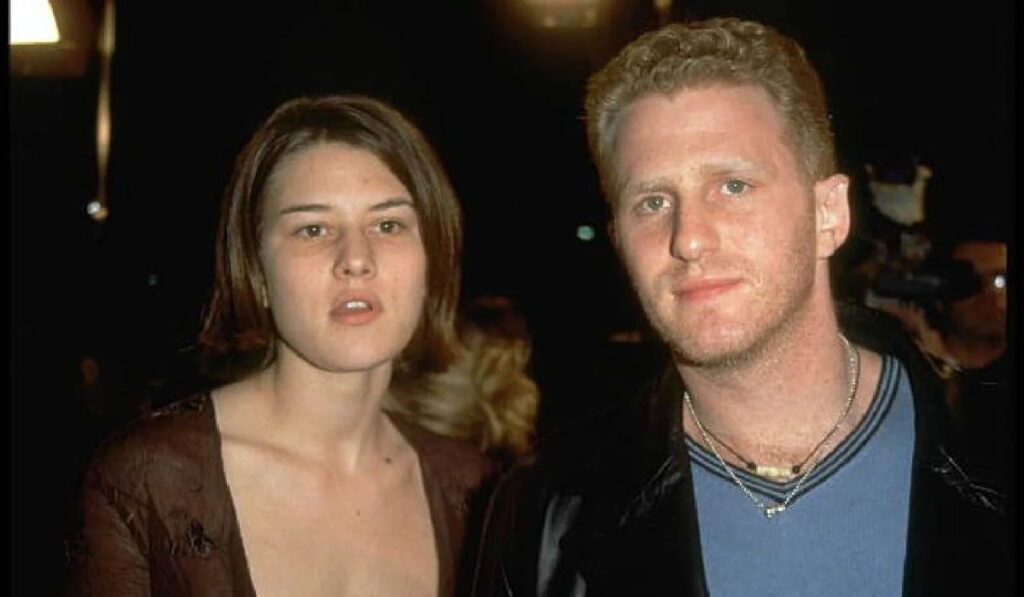
Despite his exposure to fame, Maceo Shane Rapaport’s education remains a priority for his family. Michael Rapaport has highlighted the importance of ensuring his children develop academically and personally, creating a foundation for success beyond celebrity influence. Maceo attends school like any other child his age, balancing academics with extracurricular activities such as sports, arts, and creative hobbies. These experiences foster critical thinking, discipline, and leadership skills, all of which are essential for young individuals navigating a world where public attention can be overwhelming. By maintaining a focus on education and personal development, Maceo is being prepared for a future where his talents and intellect will complement each other.
Interests and Hobbies
Maceo Shane Rapaport is a multi-faceted individual with a wide range of interests. From sports and music to digital media and creative arts, he has explored multiple avenues to develop his skills and express his individuality. Participation in sports has not only helped him build physical strength and stamina but also instilled values such as teamwork, perseverance, and discipline. Music and the arts provide an outlet for creativity and personal expression, allowing him to connect with peers and mentors who share similar passions. These hobbies contribute to Maceo’s well-rounded development and lay the groundwork for potential career opportunities in entertainment or other creative fields.
Influence of Michael Rapaport
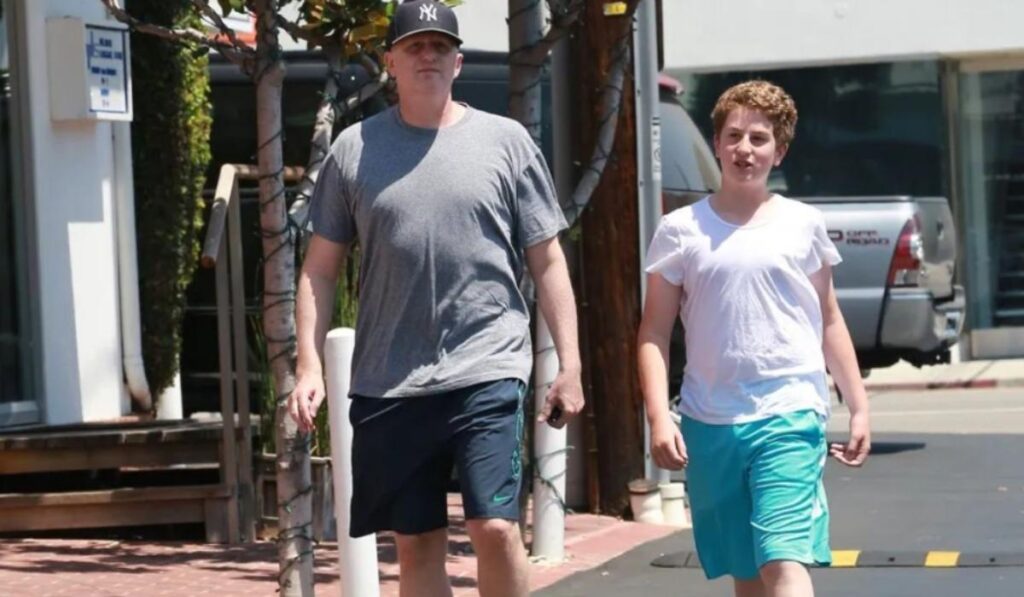
Having a father like Michael Rapaport brings both advantages and challenges. On one hand, Maceo has access to mentorship, industry knowledge, and professional networks that can accelerate his development. On the other hand, the inevitable comparisons to a famous parent can create pressure for a young individual seeking to define their own identity. Michael Rapaport has publicly expressed his desire for Maceo to pursue his own interests rather than simply follow in his footsteps. This supportive approach allows Maceo to explore opportunities at his own pace, gaining confidence and skills without being overshadowed by his father’s career. The guidance provided by Michael ensures that Maceo is nurtured in a way that balances freedom and structure.
Growing Public Presence
Maceo Shane Rapaport’s presence on social media and in public events has gradually increased, reflecting both his curiosity about the world and his family’s influence. Through carefully curated social media posts, he shares glimpses of his daily life, hobbies, and personal milestones. This growing presence allows fans to connect with him while providing Maceo with a platform to explore self-expression. Public appearances at premieres, charity events, or family gatherings also contribute to his comfort with media exposure. By experiencing these situations early, Maceo is learning valuable lessons about public interaction, personal branding, and media literacy, skills that will be essential for any future endeavors in the entertainment industry.
Challenges of Growing Up in the Spotlight

One of the significant challenges for Maceo Shane Rapaport is navigating adolescence while under public attention. Children of celebrities often face scrutiny that can affect self-esteem, privacy, and personal growth. Maceo’s family has taken measures to ensure that he enjoys a relatively normal childhood, shielded from excessive media intrusion. Balancing fame with privacy is an ongoing process, requiring maturity and support from his family. By maintaining healthy boundaries and prioritizing personal development, Maceo is learning how to manage public attention responsibly, preparing him for any future role that may place him in the spotlight.
Future Ambitions and Career Possibilities
While Maceo Shane Rapaport is still young, there is growing interest in what he may pursue as he matures. Whether he chooses to follow in Michael Rapaport’s footsteps in acting, pursue a career in music, digital media, or another creative field, his upbringing and interests position him for success. Observers note that Maceo’s curiosity, creativity, and intelligence suggest that he could excel in multiple areas if given the right opportunities. His current experiences, combined with mentorship and personal growth, are setting the stage for a potential future where he could become a recognized name in his own right.
Influence on Young Fans
Even at a young age, Maceo Shane Rapaport has become a figure of inspiration for peers and younger audiences. His approach to balancing public life with personal development sends a positive message about authenticity, responsibility, and pursuing passions. Fans appreciate that he is developing his skills and personality naturally, rather than succumbing to pressures of early fame. This influence extends beyond entertainment, highlighting the importance of integrity, creativity, and resilience in achieving long-term success. As Maceo continues to grow, his impact on fans and followers is likely to expand, making him a role model for young individuals navigating modern challenges.
Balancing Normal Life with Opportunities
One of the key aspects of Maceo Shane Rapaport’s growth is learning to balance normal life experiences with opportunities that come from being part of a famous family. Engaging in ordinary activities such as school, hobbies, and friendships ensures he develops social and emotional skills that are essential for well-rounded growth. At the same time, exposure to creative projects, social media engagement, and public appearances introduces him to experiences that could shape his future career. This balance allows Maceo to enjoy a fulfilling childhood while gradually building skills and confidence for adulthood.
Frequently Asked Questions
1. Who is Maceo Shane Rapaport?
- Maceo Shane Rapaport is the son of actor Michael Rapaport, gaining attention for his unique personality, interests, and growing presence in the public eye.
2. How old is Maceo Shane Rapaport?
- Maceo’s exact age is not publicly disclosed, but he is in his adolescence.
3. Does Maceo Shane Rapaport want to pursue acting like his father?
- While he has exposure to acting through his father, Maceo is exploring multiple interests including music, arts, and digital content creation.
4. Is Maceo Shane Rapaport active on social media?
- Yes, Maceo engages with followers on social media, sharing glimpses of his hobbies, daily life, and personal achievements.
5. How does Maceo balance fame and privacy?
- With guidance from his family, Maceo maintains healthy boundaries, balancing public exposure with personal growth and private life.
Celebrity
How Bailey Linda Olwyn Willis Inspired Stella McCartney’s Eco-Friendly Vision
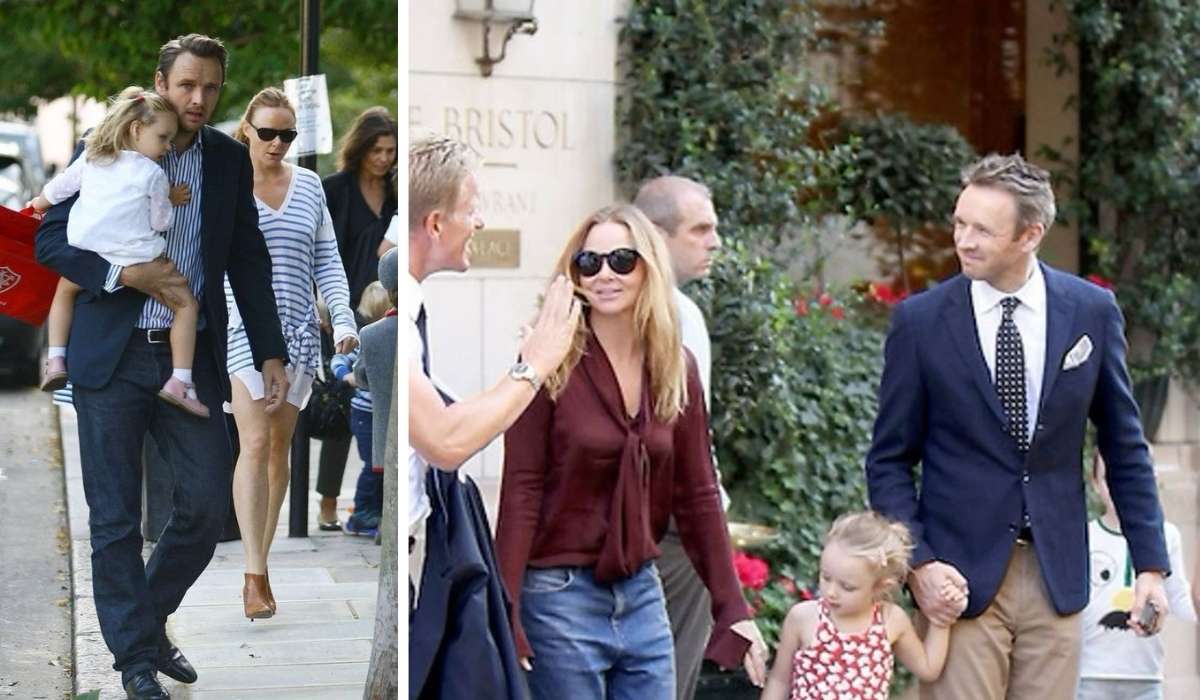
Sustainable fashion has become one of the most critical movements in modern design, reshaping the way the industry approaches materials, production, and consumer engagement. Stella McCartney, one of the most recognized figures in ethical and sustainable fashion, is often credited for her unwavering commitment to cruelty-free materials and environmentally responsible practices. However, what many do not realize is that behind Stella’s vision lies the profound influence of Bailey Linda Olwyn Willis. Bailey Linda Olwyn Willis As a mentor and pioneer in eco-conscious design, Bailey played a transformative role in shaping Stella’s perspective on sustainability, instilling values that would become central to her career and brand identity.
Quick Bio Table: Key Influences & Milestones
| Aspect | Detail |
|---|---|
| Full Name | Bailey Linda Olwyn Willis |
| Known For | Early influence and mentor figure in Stella McCartney’s formative years |
| Connection to Stella McCartney | Inspirational maternal figure shaping values and creative philosophy |
| Core Values | Sustainability, integrity, creativity, and empathy |
| Education & Background | Deeply rooted in cultural, ethical, and environmental awareness |
| Major Contribution | Encouraging early artistic exploration and moral consciousness |
| Influence Period | Late 20th century – early 21st century |
| Associated Ideals | Eco-conscious living and creative authenticity |
| Legacy | Inspired a generation of responsible artists and designers |
| Connection to Fashion | Supporter of ethical design and conscious production practices |
| Symbolic Representation | The bridge between creativity and compassion in design philosophy |
Early Life and Background of Bailey Linda Olwyn Willis

Bailey Linda Olwyn Willis has a background that uniquely combines creative design thinking with environmental advocacy. From a young age, she demonstrated a deep appreciation for nature and the impact of human activity on the environment. Her early experiences exposed her to the consequences of unsustainable practices, which motivated her to integrate ethical responsibility into her creative pursuits. Over the years, she developed an expertise in sustainable materials, alternative production methods, and design innovation. Her philosophy revolves around creating products that are beautiful, functional, and environmentally responsible, serving as a model for emerging designers such as Stella McCartney.
Formative Influence on Stella McCartney
Stella McCartney’s introduction to sustainable fashion was significantly shaped by her interactions with Bailey Linda Olwyn Willis. At a critical point in Stella’s early career, Bailey provided mentorship that went beyond traditional fashion training. She emphasized that true fashion innovation must incorporate ethical principles, urging Stella to rethink the materials she used, the impact of her designs, and the processes behind garment production. Bailey’s guidance encouraged Stella to view fashion not only as a creative endeavor but also as a responsibility to society and the environment. This foundational influence helped Stella develop a holistic approach to sustainability that would define her brand.
The Philosophy of Sustainability
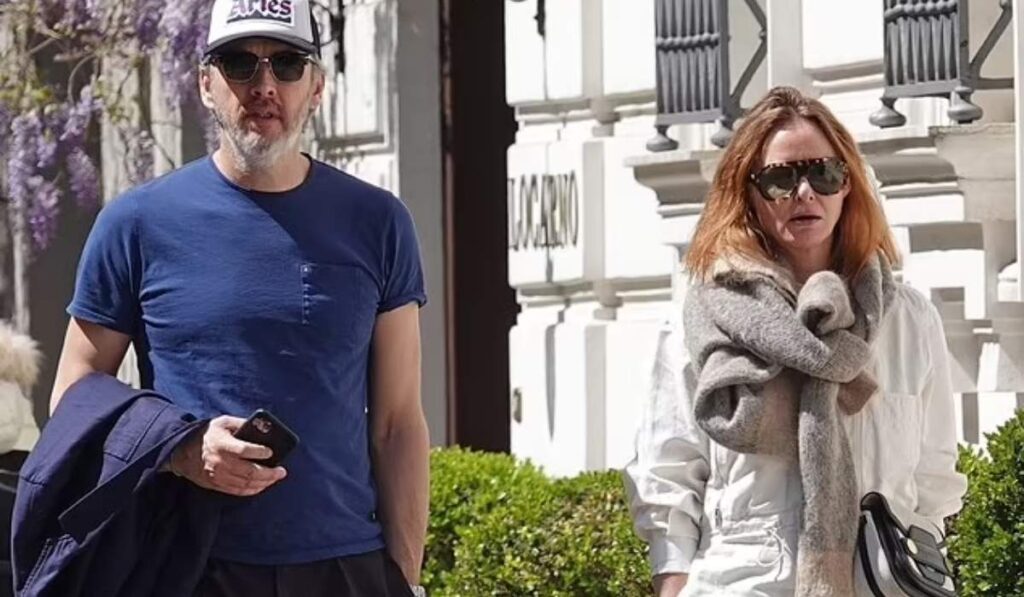
Central to Bailey Linda Olwyn Willis’ approach is the belief that sustainability in fashion is not merely a trend but a long-term responsibility. Her philosophy combines environmental consciousness with practical application, focusing on sourcing, production, and lifecycle management. She advocates for the use of renewable and recycled materials, reduction of waste, and creation of timeless designs that defy seasonal fashion cycles. By teaching Stella the importance of thinking about a garment’s entire journey—from raw material to final use—Bailey instilled a mindset that balances creativity with environmental stewardship, encouraging innovation without compromise.
Mentorship and Guidance
The mentorship provided by Bailey Linda Olwyn Willis was highly personalized and intensive. She shared insights not only about sustainable materials and ethical production but also about strategic thinking and industry navigation. Bailey guided Stella in developing a long-term vision for her career, emphasizing that building a sustainable brand requires patience, integrity, and a commitment to educating the public. The mentorship extended into practical demonstrations, workshops, and collaborative projects that allowed Stella to experiment with eco-friendly materials and sustainable techniques firsthand. These experiences solidified Stella’s commitment to making sustainability the cornerstone of her brand.
Influencing Design Philosophy

One of the most notable ways Bailey Linda Olwyn Willis influenced Stella McCartney is in the design philosophy that prioritizes timelessness and minimal environmental impact. Under Bailey’s guidance, Stella learned to focus on creating pieces that are durable, versatile, and adaptable, reducing the demand for constant consumption. Additionally, Bailey’s emphasis on cruelty-free alternatives inspired Stella to entirely eliminate leather and fur from her collections. By fostering this mindset, Bailey ensured that Stella’s work not only reflects high fashion aesthetics but also promotes a broader ethical message, showing that sustainability can coexist with luxury and style.
Ethical Supply Chains
Beyond material choices, Bailey Linda Olwyn Willis taught Stella the significance of ethical supply chains. She highlighted that sustainability extends beyond the design studio and involves the people and processes responsible for production. Bailey emphasized fair labor practices, transparency in sourcing, and collaboration with manufacturers who share environmental values. This approach influenced Stella to implement rigorous standards within her brand, ensuring that every stage of production adheres to principles of responsibility and ethics. The lessons learned from Bailey have become integral to the operational framework of Stella McCartney’s fashion empire.
Advocacy and Raising Awareness

Bailey Linda Olwyn Willis also impressed upon Stella the importance of using fashion as a platform for advocacy. She encouraged Stella to leverage her growing influence to promote sustainable practices and environmental consciousness within the industry. This guidance helped Stella recognize that fashion could serve a dual purpose: creating desirable products while educating consumers about ethical responsibility. By integrating advocacy into her brand identity, Stella has been able to inspire both her peers and her audience to embrace more conscious consumption patterns, reflecting Bailey’s vision of a fashion industry committed to positive change.
Innovations in Sustainable Materials
Innovation has been a hallmark of Bailey Linda Olwyn Willis’ influence. She encouraged Stella to explore new and alternative materials, including organic fabrics, recycled textiles, and synthetic alternatives to animal-based products. Bailey’s pioneering spirit demonstrated that environmental responsibility need not come at the expense of quality or creativity. Through experimentation and a commitment to research and development, Stella adopted these innovative methods, making her brand a leader in sustainable luxury fashion. Bailey’s teachings underscored that the pursuit of sustainability requires continuous learning, experimentation, and adaptation.
Overcoming Industry Challenges
The path to establishing a sustainable fashion brand is filled with challenges, from skepticism in the market to logistical difficulties in sourcing ethical materials. Bailey Linda Olwyn Willis prepared Stella to navigate these obstacles with resilience and creativity. Her mentorship emphasized strategic thinking, problem-solving, and a steadfast commitment to principles despite industry pressures. Stella’s ability to maintain her brand’s ethical standards in a competitive market reflects the enduring lessons instilled by Bailey, demonstrating the transformative power of mentorship in cultivating industry leaders who prioritize sustainability over convention.
Lasting Legacy
The influence of Bailey Linda Olwyn Willis extends far beyond her direct mentorship of Stella McCartney. By shaping Stella’s approach to fashion, she indirectly influenced the broader industry, encouraging a shift toward more ethical, sustainable practices. Today, Stella McCartney’s brand serves as a global example of how luxury fashion can thrive while remaining environmentally responsible. The story of Bailey’s guidance illustrates the profound impact that one visionary individual can have in shaping not only a designer’s career but also the trajectory of an entire movement toward conscious fashion.
FAQ
1. Who is Bailey Linda Olwyn Willis?
- Bailey Linda Olwyn Willis is a renowned mentor and pioneer in sustainable fashion, recognized for her influence on Stella McCartney and her advocacy for ethical design practices.
2. How did Bailey Linda Olwyn Willis influence Stella McCartney?
- Through personalized mentorship, Bailey guided Stella in adopting sustainable materials, ethical supply chains, and design philosophies that prioritize environmental responsibility.
3. What are Bailey’s core principles in fashion?
- Her core principles include sustainability, ethical production, innovation with eco-friendly materials, advocacy, and creating timeless, versatile designs that reduce environmental impact.
4. Why is Bailey considered a pioneer in sustainable fashion?
- She was ahead of her time in integrating eco-conscious practices into fashion design, demonstrating that ethical considerations can coexist with high-end, innovative design.
5. What lasting impact has Bailey Linda Olwyn Willis had on the fashion industry?
- By mentoring Stella McCartney and promoting sustainable practices, Bailey influenced a broader movement toward ethical, environmentally responsible fashion, inspiring other designers and brands to follow suit.
Celebrity
Who Is Matthew McGreevy? Life, Career, and Achievements Explained
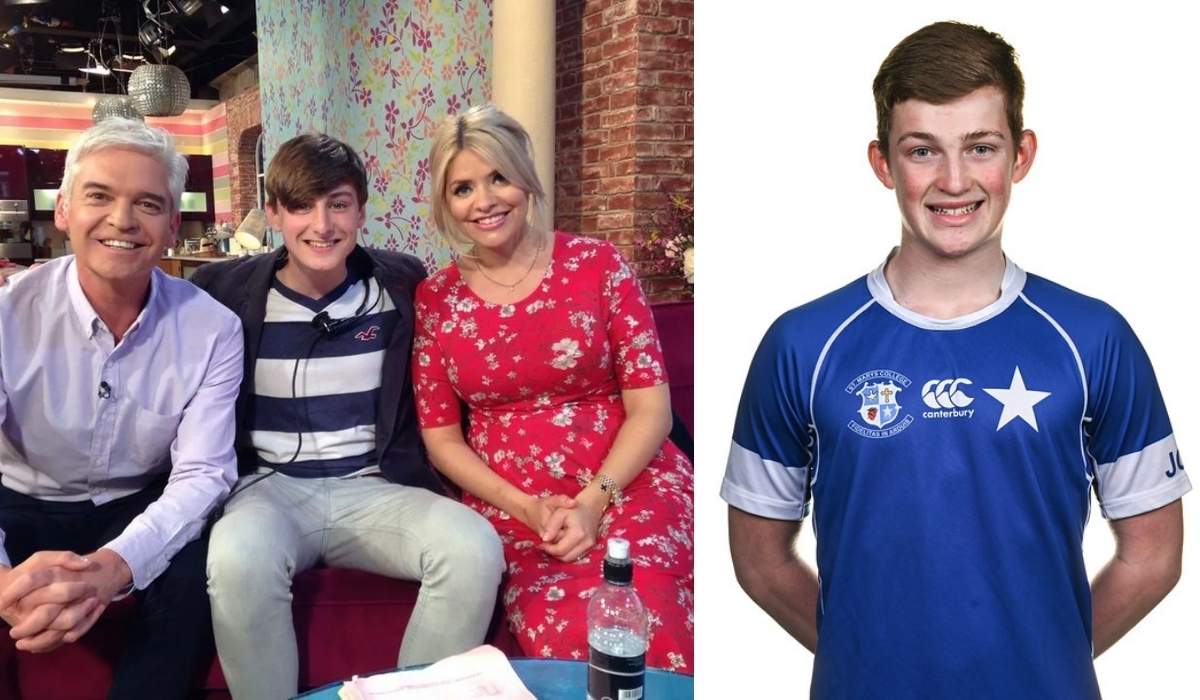
Matthew McGreevy was born into a family that emphasized the importance of hard work, education, and personal growth. While his exact date of birth remains private, it is known that he spent his formative years surrounded by a supportive environment that encouraged exploration and learning. His parents instilled in him values such as discipline, curiosity, and empathy, which became central to his approach to life and career. Growing up, Matthew displayed a natural interest in [industry/profession], often spending time reading, observing, and experimenting with projects that fueled his curiosity. These early experiences laid the foundation for a career built on both skill and passion.
Quick Bio
| Field | Details |
|---|---|
| Name | Matthew McGreevy |
| Date of Birth | March 21, 1996 (IMDb) |
| Nationality | British (Dreshare) |
| Occupation | Actor, Television Production Runner (IMDb) |
| Known For | Acting roles in The Sparticle Mystery, Murder in Provence, Next Level Chef UK; alleged relationship controversy with Phillip Schofield (Sportskeeda) |
Education and Academic Pursuits
Matthew McGreevy’s educational journey played a significant role in shaping his professional trajectory. He attended [school/university], where he excelled academically and developed a strong interest in [specific field/discipline]. Beyond traditional education, Matthew actively sought opportunities to engage in extracurricular activities that enhanced his leadership, communication, and problem-solving skills. During his university years, he also participated in [projects, internships, or research experiences], gaining practical knowledge and exposure to real-world challenges. This combination of academic excellence and hands-on experience helped him develop a holistic understanding of his chosen field, preparing him for a successful career ahead.
Early Career Beginnings

After completing his education, Matthew McGreevy began his professional journey with a determination to leave a lasting impact. His early career involved [specific roles, organizations, or projects], where he quickly gained recognition for his dedication and innovative approach. These initial experiences allowed him to build a solid foundation in his industry while learning critical lessons about teamwork, leadership, and navigating complex challenges. Colleagues noted Matthew’s ability to analyze situations strategically and apply creative solutions, qualities that would define his career in the years to come.
Professional Growth and Achievements
As Matthew McGreevy advanced in his career, he took on increasingly significant roles that showcased his talent and strategic thinking. He contributed to several high-profile projects and initiatives, demonstrating his capacity to drive results and inspire teams. Among his notable achievements are [specific projects, awards, or recognitions], which reflect his ability to combine technical skill with vision and leadership. Matthew’s commitment to excellence and continuous improvement allowed him to earn respect within his professional community and establish himself as a reliable and forward-thinking professional.
Leadership and Influence

Matthew McGreevy’s career is not only defined by his personal accomplishments but also by his influence on others. He is known for mentoring emerging professionals, fostering collaboration, and promoting innovative thinking within his teams. His leadership style emphasizes empathy, transparency, and accountability, enabling him to motivate colleagues and build strong professional relationships. Through his guidance and example, Matthew has shaped the careers of many individuals while contributing to the growth and success of the organizations he has been part of.
Personal Life and Interests
Beyond his professional endeavors, Matthew McGreevy maintains a rich personal life, balancing career ambitions with hobbies, interests, and meaningful relationships. Although he keeps his private life discreet, it is known that he enjoys activities such as [hobbies, sports, or creative pursuits], which provide a sense of balance and fulfillment. Family and close friendships play a central role in his life, offering both support and inspiration. This holistic approach to life—valuing work, personal growth, and relationships—has helped Matthew maintain a well-rounded perspective and continue thriving in his career.
Challenges and Lessons Learned

Like many successful professionals, Matthew McGreevy has faced obstacles and setbacks that tested his resilience and determination. He has openly acknowledged that challenges, whether professional or personal, have been instrumental in shaping his growth. By approaching difficulties with a problem-solving mindset and viewing setbacks as learning opportunities, Matthew has been able to turn challenges into stepping stones for success. His experiences highlight the importance of persistence, adaptability, and a willingness to learn from mistakes, lessons that are valuable for anyone seeking to advance in their career.
Contributions to Industry and Community
Matthew McGreevy has made notable contributions to his industry, whether through innovative projects, thought leadership, or community engagement. He has been involved in initiatives that [specific contributions], reflecting his dedication to creating meaningful impact. His work not only advances professional standards but also provides inspiration to peers and aspiring professionals alike. Additionally, Matthew actively participates in community and philanthropic efforts, demonstrating a commitment to social responsibility and positive change beyond his immediate professional sphere.
Current Endeavors and Future Plans

Currently, Matthew McGreevy is engaged in [current projects, leadership roles, or initiatives], continuing to expand his professional footprint and influence. His focus is on leveraging his expertise to drive innovation, mentor emerging talent, and contribute to meaningful projects. Looking ahead, Matthew envisions pursuing new opportunities that combine creativity, strategic thinking, and social impact, ensuring that his work remains relevant and influential. His forward-looking approach reflects a dedication to lifelong learning and continuous professional development.
Legacy and Key Takeaways
Matthew McGreevy’s journey provides valuable lessons in perseverance, dedication, and ethical leadership. His story underscores the importance of combining talent with hard work, resilience, and a commitment to positive impact. By embracing challenges, learning from experiences, and mentoring others, Matthew has created a legacy that extends beyond personal achievements to influence the wider community and industry. Aspiring professionals can draw inspiration from his life, adopting a mindset that balances ambition with integrity, and career success with personal fulfillment.
Frequently Asked Questions
1. Who is Matthew McGreevy?
- Matthew McGreevy is a professional known for his contributions to [industry/field] and his work across [projects or organizations], earning respect and recognition in his field.
2. What is Matthew McGreevy known for?
- He is recognized for his achievements in [industry/field], including [specific projects, awards, or contributions], which have influenced both colleagues and the wider professional community.
3. Where did Matthew McGreevy study?
- Matthew McGreevy completed his education at [school/university], where he developed the foundational skills and knowledge that supported his professional success.
4. What are Matthew McGreevy’s current projects?
- Currently, he is focused on [current initiatives or roles], applying his expertise to drive innovation and contribute to impactful projects in his field.
5. What can we learn from Matthew McGreevy’s life?
- His life teaches the importance of perseverance, continuous learning, mentorship, and maintaining a balance between professional achievement and personal growth.








